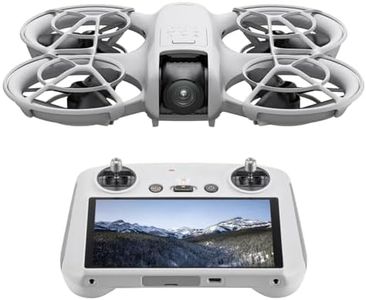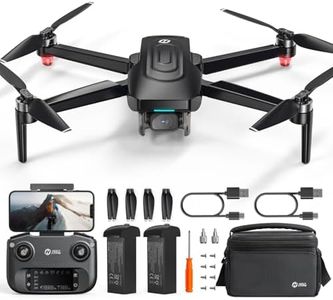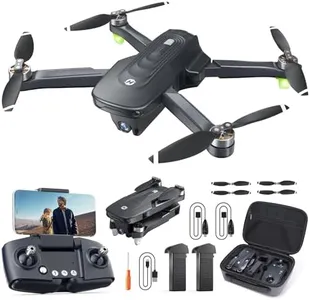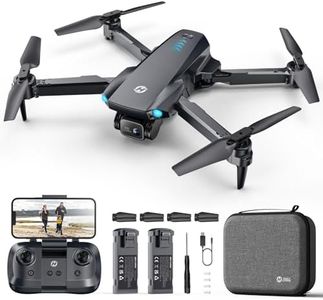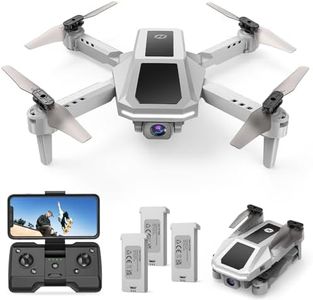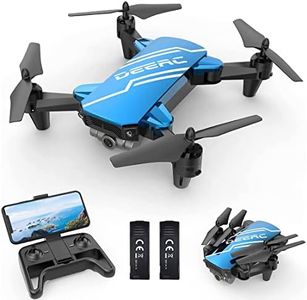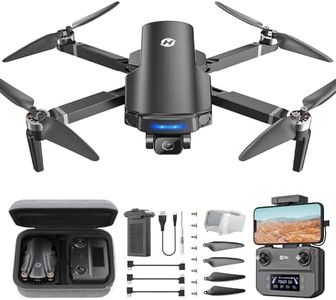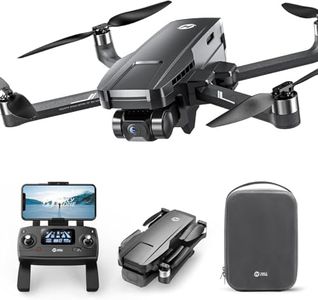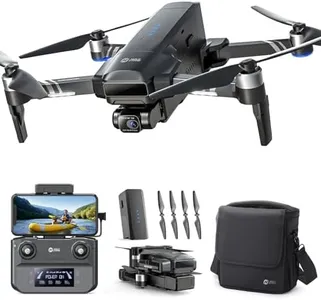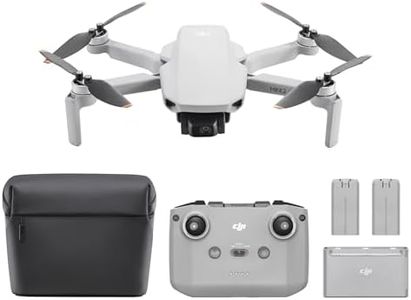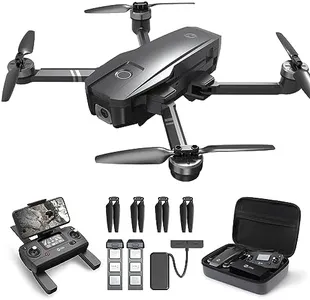We Use CookiesWe use cookies to enhance the security, performance,
functionality and for analytical and promotional activities. By continuing to browse this site you
are agreeing to our privacy policy
10 Best Camera Drones
From leading brands and best sellers available on the web.By clicking on a link to a third party's website, log data is shared with that third party.
Buying Guide for the Best Camera Drones
When choosing a camera drone, it's important to think about how and where you plan to use it. Are you flying just for fun, capturing family memories, creating professional content, or maybe exploring new perspectives in filmmaking? Identifying your primary use helps you focus on features that will actually matter for you, instead of being dazzled by specs you might never use. Consider how comfortable you are with technology and flying drones too, since some drones are much easier to handle than others. Once you have a sense of your needs, it's time to look at the key specifications. These will help you compare different drones and find the one tailored for your style of flying, filming, and creative goals.Camera ResolutionCamera resolution tells you how detailed your photos and videos will be, usually measured in megapixels for photos and as 720p, 1080p, 2.7K, 4K, or even 8K for video. Higher resolution captures more detail, which is important if you want crisp, sharp images or plan to crop your photos and videos later. Lower resolutions, like 720p or 1080p, are fine for casual sharing or social media, while 4K or above is ideal for professional projects or if you want the option to print large images. If you're mainly sharing on social apps, ultra-high resolution isn't always necessary, but if you're serious about photography or want to future-proof your footage, a higher resolution is worth considering.
Flight TimeFlight time refers to how long your drone can stay in the air on a single battery charge. Most drones offer anywhere from 10 to 40 minutes per flight, depending on their size, battery, and design. Shorter flight times are generally fine for casual users or beginners who are just learning, whereas longer flight times are more important for capturing complex scenes or filming longer sequences, especially in remote locations. Think about how much uninterrupted flying you want – if you plan to travel far or record longer takes, go for a drone with longer battery life.
RangeRange refers to the maximum distance between the drone and its controller while maintaining a stable connection. This can vary from a few hundred meters to several kilometers. For flying in parks or small spaces, a short range is sufficient. If you want to shoot aerial videos of large landscapes or need flexibility to explore wider areas, a longer range is preferable. Always make sure your range fits where you plan to fly – and stay within legal and line-of-sight limits.
StabilizationStabilization, usually provided by a gimbal, affects how steady your images and videos will look. Some drones use digital stabilization, while higher-end ones offer mechanical gimbals (like 2-axis or 3-axis). The more axes the gimbal has, the smoother and more professional your footage will be, especially in windy conditions or when the drone moves quickly. Casual users might get by with basic stabilization, but if you want cinematic, shake-free videos, look for a drone with a 3-axis gimbal.
Obstacle AvoidanceObstacle avoidance systems help the drone detect and avoid objects while flying. These can range from basic downward sensors (to help with landings) to advanced systems that use cameras or sensors on multiple sides. If you're a beginner or plan to fly in areas with lots of trees or buildings, having robust obstacle avoidance is helpful for preventing crashes. If you tend to fly in open, unobstructed areas and are confident in your piloting skills, a simpler system may be enough.
PortabilityPortability describes how easy it is to carry your drone around. Some drones fold up to fit in a small bag, while others are larger and bulkier. If you plan to travel, hike, or just want something that's easy to take anywhere, look for a lightweight, foldable drone. On the other hand, if size isn’t a concern and you prioritize performance, larger drones often offer better stability and features but are more cumbersome to transport.
Ease of UseEase of use includes how simple the drone is to set up, control, and operate. Some drones come with automated flight modes like follow-me, one-touch takeoff/landing, and return-to-home functions, which are great for beginners or casual flyers. More advanced drones might offer manual controls and customization that appeal to experienced users. If you're starting out, look for a drone with plenty of beginner-friendly features. If you already have experience or want to experiment creatively, you might prefer more advanced controls and custom settings.


